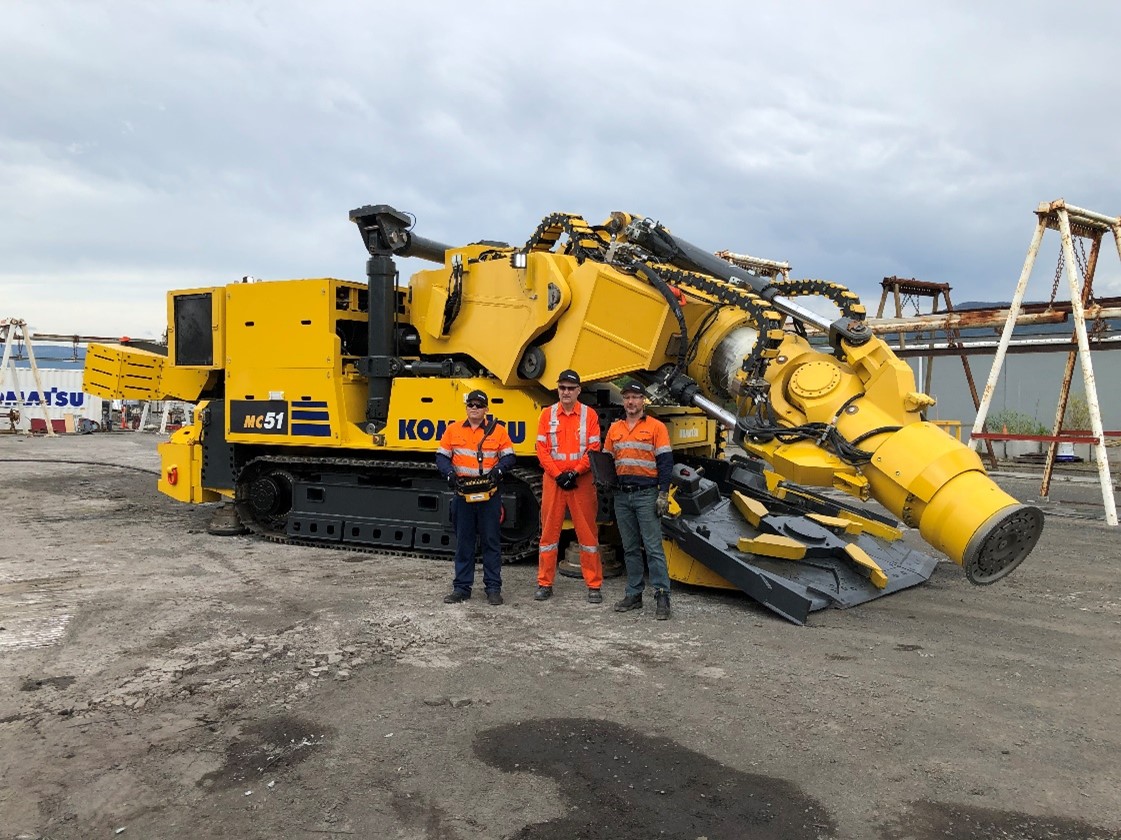Collaboration and innovation
In February 2020, Vale chose to work with Komatsu, one of the world’s biggest industrial equipment manufacturers to advance the future of underground hard rock excavation through optimizing use of Komatsu’s DynaCut mechanical cutting technology.
The Komatsu’s mechanical rock excavator (MRE) called the MC51 with DynaCut technology continuously cuts through hard rock instead of using the traditional blast and drill method.
In February 2021, the cutting-edge machine was shipped in pieces from Australia to Garson Mine in Sudbury and in August 2021, Vale and Komatsu started trialing DynaCut’s capabilities on Komatsu’s new MC51 machine at the mine, working together to increase the pace at which the innovative technology will be available to the larger market. The 18-month trial at Garson, which will cover 400 metres, will see more than 10 years of Komatsu research and development put to the test.


